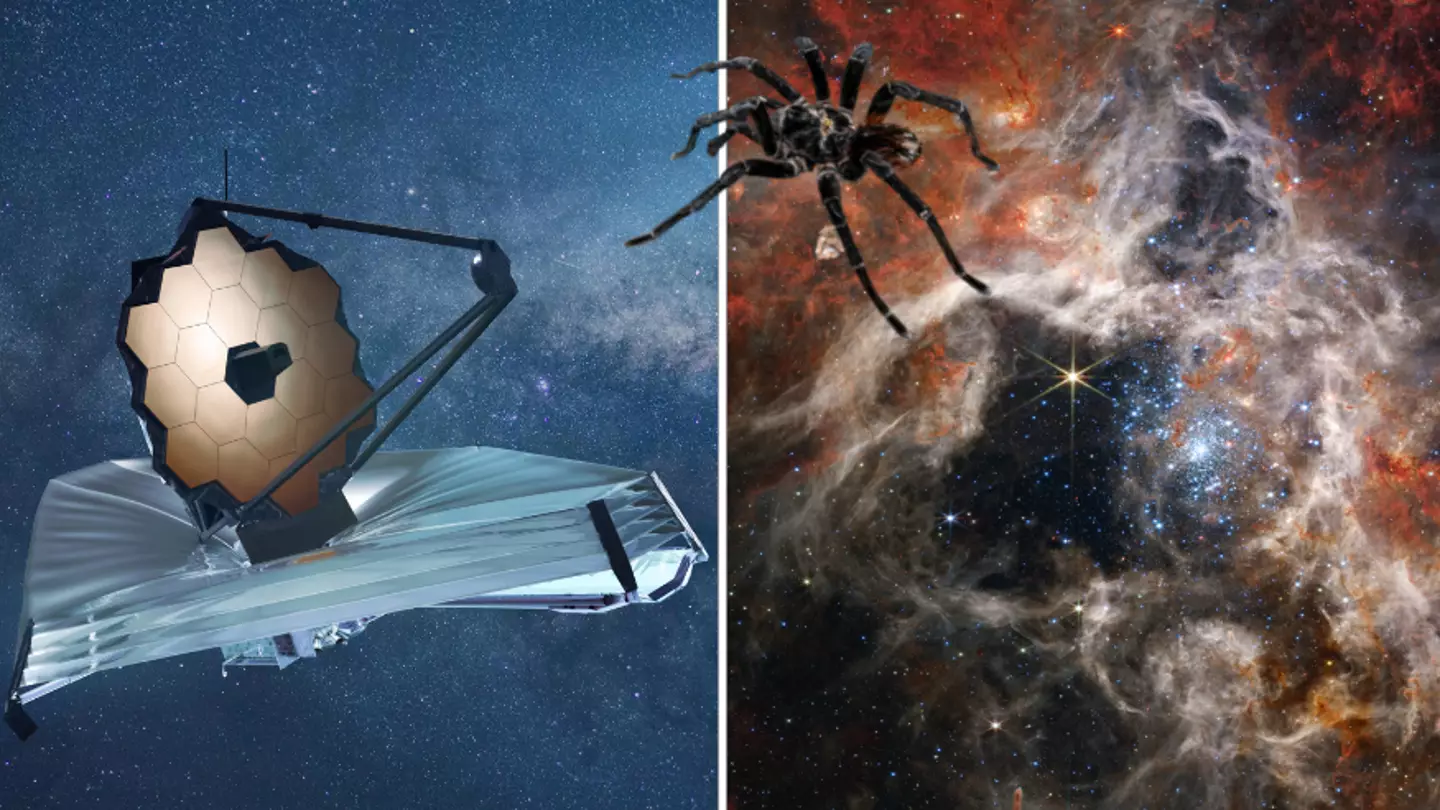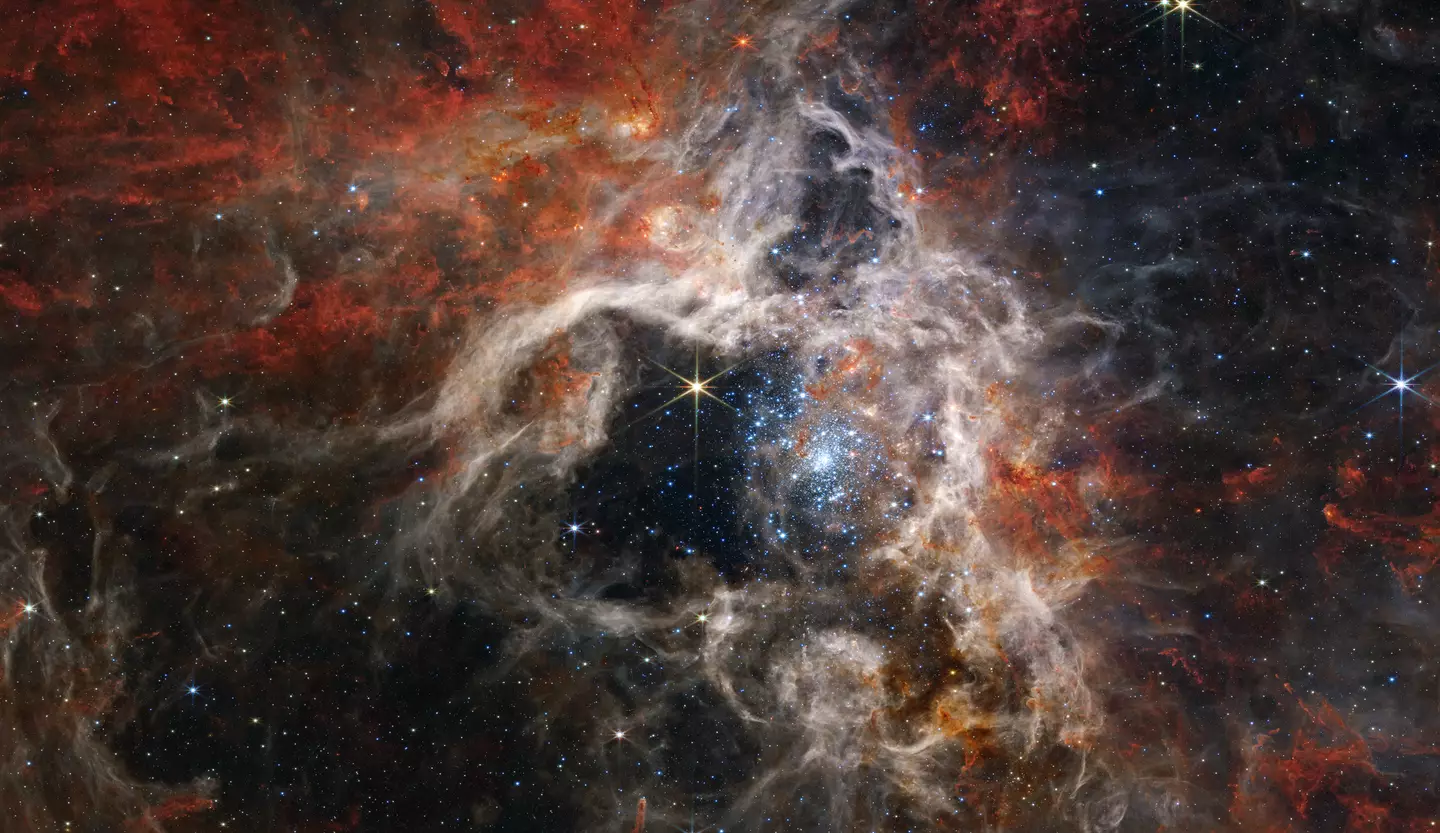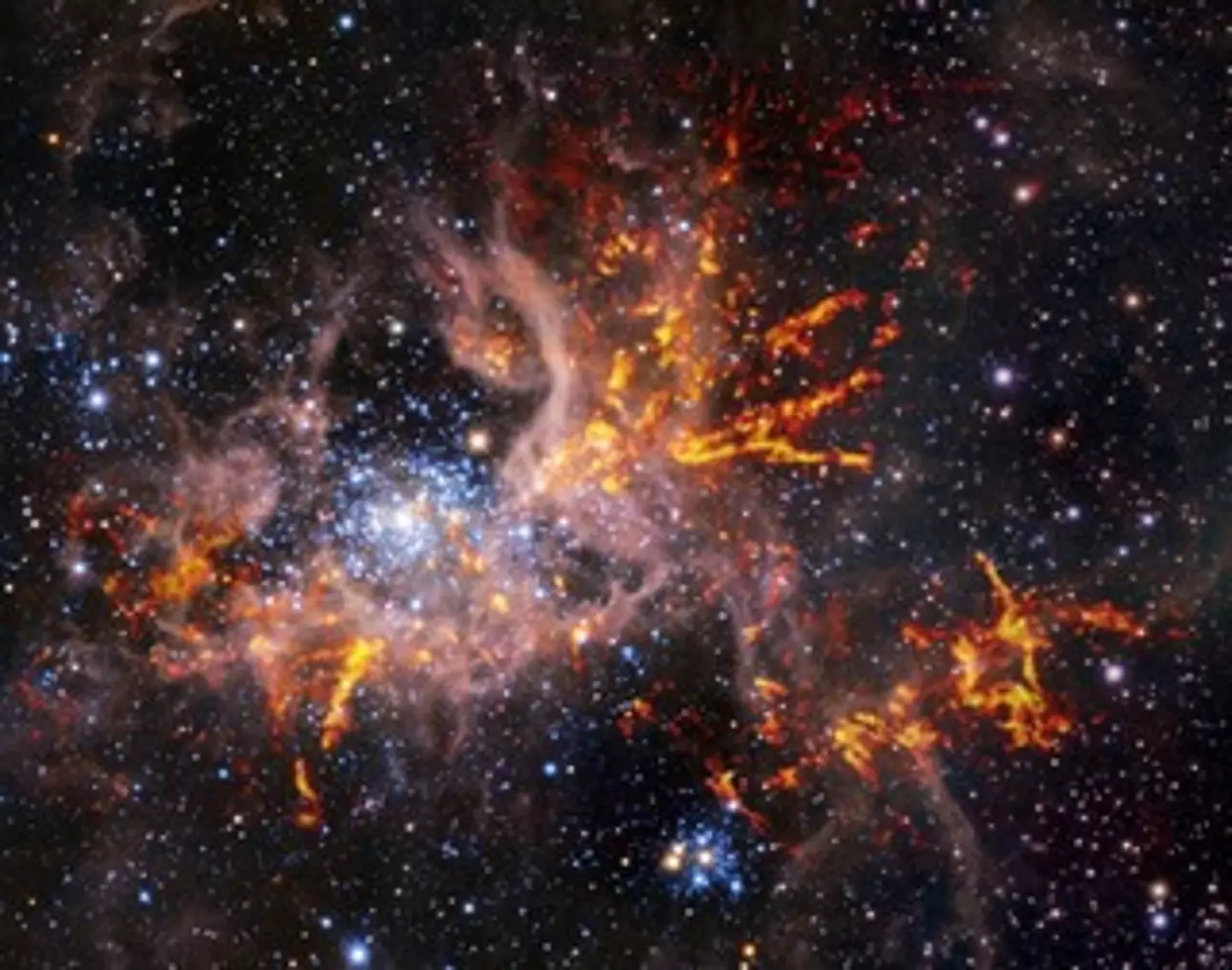
Humans have been stargazing since the dawn of time and, thanks to neat NASA equipment we are now able to peer even further into the galaxy to catch a glimpse of an enormous tarantula not too far from out own galaxy.
It lurks a mere 161,000 light-years away from Earth. But unlike its namesake on Earth, this tarantula couldn't be less creepy crawly.
We can see that even better now thanks to a few brand-spanking new images captured by the James Webb Space Telescope. Yay!

Advert
The mosaic image - so, lots of little pictures combined to make one big one - has revealed the beauty of the Tarantula Nebula, in all of its stunning glory.
"Nicknamed the Tarantula Nebula for the appearance of its dusty filaments in previous telescope images, the nebula has long been a favourite for astronomers studying star formation," NASA said.
"The region resembles a burrowing tarantula's home, lined with silk."
The nebula, also known as 30 Doradus, is home to the some of the largest and hottest stars in the known universe.
The NASA telescope uses Near-Infrared Camera (NIRCam) in order to capture the Tarantula Nebula star-forming region in a new light.
Advert
The image taken by the Webb telescope, which is far stronger than the Hubble Space Telescope, has so much detail that astro-boffins are now able to catch a glimpse of tens of thousands of never-before-seen young stars.

These once-invisible stars were were previously shrouded in cosmic dust, but now we can see the humungous gas balls are actually glittering a pale blue.
While imagery of the Tarantula Nebula has been captured by the Hubble Space Telescope, new instruments on the James Webb allow us to peer beyond what the Hubble can't see.
A NASA spokesperson explained why these new, fan-dangled pictures of space are just so cool.
Advert
"One of the reasons the Tarantula Nebula is interesting to astronomers is that the nebula has a similar type of chemical composition as the gigantic star-forming regions observed at the universe’s 'cosmic noon' (a galactic growth spurt) when the cosmos was only a few billion years old and star formation was at its peak," NASA said.

"Star-forming regions in our Milky Way galaxy are not producing stars at the same furious rate as the Tarantula Nebula, and have a different chemical composition."
NASA added: "This makes the Tarantula the [best visual] example of what was happening in the universe as it reached its brilliant high noon."
Pretty neat, huh? Let's just hope it doesn't actually contain any real space tarantulas.
Advert
Because in that case, we're out.